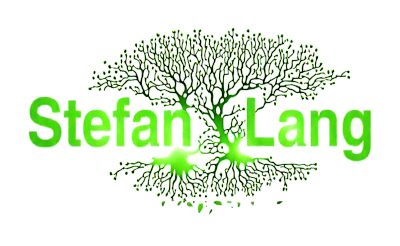Results: Construction of a library of input and output adapters for the generic perceiverIO architecture. Implemented modalities (data types): Text, audio, images, videos, time series
Methods:
- Input adapters: modality-specific restructuring of input data as a 2-dimensional array and concatenation of modalities as input to perceiverIO
- Output adapter: development of queries (query arrays) for reconstruction (autocoding), classification, and prediction of the input data
- Model: methods for data preparation, configuration of models (depending on input data and task), training of models and use of models
Results: Temporal as well as spatial prediction of epidemiological parameters (new infections, R-value) by linking and interpreting different data sources (infection numbers, socio-demographic data, mobility, ...)
Methods:
- Building the data infrastructure: merging & processing the different data sources in a graph database (ArangoDB). Pipeline for updating the data
- Data analysis: frequency analysis & filtering (smoothing). Determination of temporal dependencies (cross-correlation) between time series (within locations and between locations). Determination of the effect of measures taken on the time series
- Modeling: Neural network for multivariate time series analysis (Temporal Fusion Transformer) taking into account static covariates (place, number of inhabitants, ...). Determination of partial dependencies of the static and dynamic covariates on the target variable
- Deployment: Docker container with databases, models and API
Results: Automated transcription of audio files in German language. Monitoring of transcription quality and training of new / unrecognized words. Classification / interpretation of the transcribed texts
Methods:
- Speech-to-text (STT): KaldiASR model trained on German language dataset. Determination of word recognition probabilities for quality estimation
- Trainer: module to teach new words to the STT model. Testing recognition rate for given keywords. Phonemization of poorly recognized words using a separate grapheme-to-phoneme model (g2p). Scraping sample texts to calculate word transition probabilities. Incorporation of the new words and phonemes into the grammar and phoneme classes of the model and retraining of the model. Synthesizing some example texts through a separate text-to-speech model (CoquiTTS) and retranslating them into text as validation
- Natural language processing: document indexing of the transcribed texts, semantic search of keywords and classification of the texts based on given classes
Results: Identification of product groups with similar sales patterns. Analysis of trends and seasonality of sales. Estimation of future material requirements for several months
Methods:
- Data preparation: connection to sales database. Data set with product sales as time series and metadata about the products (single parts, colors, size, ...)
- Data analysis: finding correlations in sales behavior, grouping of products. Frequency analysis and seasonal decomposition of time series
- Demand forecasting: predicting sales of products or product groups, taking into account product characteristics, current trends and seasonal sales patterns (Prophet and NBeats ensemble). Estimation of future material demand
Results: Estimation of the impact of errors/delays in processes at specific locations on the remaining transportation network
Methods:
- Data preparation: structuring data into locations, movements between locations, and processes at locations. Calculation of temporal static and dynamic properties of locations (capacities, load factors, ...)
- Data analysis: analysis of movements and disturbances in the network, estimation of the effect of disturbances on subsequent stations (identification of error-chains)
- Simulation: simulation of the effect of changed transport routes / times or changed processes / parameters at the locations on the overall network
Results: Pathogens must camouflage themselves in the body to avoid being recognized as foreign and beeing removed. The camouflage cannot be perfect. The immune system must weigh at what "threshold" of self-similarity it might attack camouflaged pathogens (a low threshold means little autoimmunity, but poorer defense against
camouflaged pathogens, a high threshold means good defense but possible autoimmunity). Identification of target proteins for drug intervention of autoimmunity
Methods:
- Literature review: (innate) immune system, complement system, social systems theory, mimicry/crypsis, mathematical / game theoretical models of mimicry, mathematical / metabolic models of complement system
- Modeling: transfer of behavioral models describing mimicry and crypsis in animals to the microbiological level (molecular crypsis). Linking crypsis models to models of the innate immune response (specifically complement system). Modeling of the trade-off between autoimmunity and defense against camouflaged pathogens
- Publication: Publication of relevant results in scientific journals
Results: Implementation of a protein microarray and fluorescence filter in a smartphone attachment for on-site detection of specific (e.g., unwanted) proteins in samples (e.g., growth hormones in milk). Efficient analysis directly on the smartphone using computer vision methods
Methods:
- Data preparation: standardize, interpolate, and rectify (orthogonalize) input images (colored spots of the microarray taken with smartphones, i.e., highly varying qualities)
- Image recognition: localize spots and mark edges. Identify spots of positive / negative controls. Determine the color intensities of the other spots and calibrate them against the controls to calculate the concentration of the target protein in the sample
Results: Characterization of forms of cooperation in biofilms. In particular, modeling of intra-species and inter-species crossfeeding interactions. Investigation of the evolutionary stability of cooperation with respect to parasitism
Methods:
- Literature review: social systems theory, evolutionary game theory, forms of cooperation and communication in microorganisms, crossfeeding
- Modeling: agent-based model to simulate crossfeeding interactions between unicellular fungi. Modeling the effect of communication via molecules released into the environment or direct connection of individuals by nanotubes
- Publication: Publication of relevant results in scientific journals
Results: Design and implementation of algorithms for separation of cell aggregates (segmentation), tracking of single cells and extraction of cell typical parameters. Later: further development to analyze data from confocal laser scanning microscopy (5-dimensional)
Methods:
- Data preparation: deconvolution of images with microscope-specific kernel (remove specific light scattering patterns), interpolation, standardization
- Segmentation: separate foreground (focused cells) from background (noise, macromolecules, non-focused cells, ...)
- Image recognition: recognize single cells and cell clusters. Separate cell clusters. Reconstruct shape of single cells
- Extract features: Recognize specific features of cell types and characterize given properties (size, movement pattern, speed, ...)


